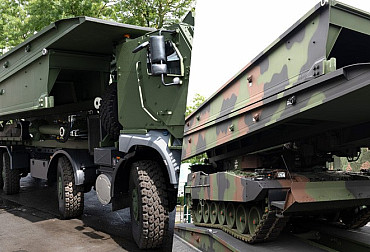The future supersonic tactical aircraft of the Czech Air Force: the Gripen or the F-35?
The conference "Future Air Force - New Generation Aircraft" held under the auspices of the Commander of the Air Force of the Czech Republic, Maj. Gen. Ing. Petr Mikulenka at the end of April, the discussion on the specific type of supersonic aircraft to be used by the tactical air force of the Czech Air Force after 2027 was fully launched. The conference was held within the framework of professional events under the banner of Future Forces Forum.
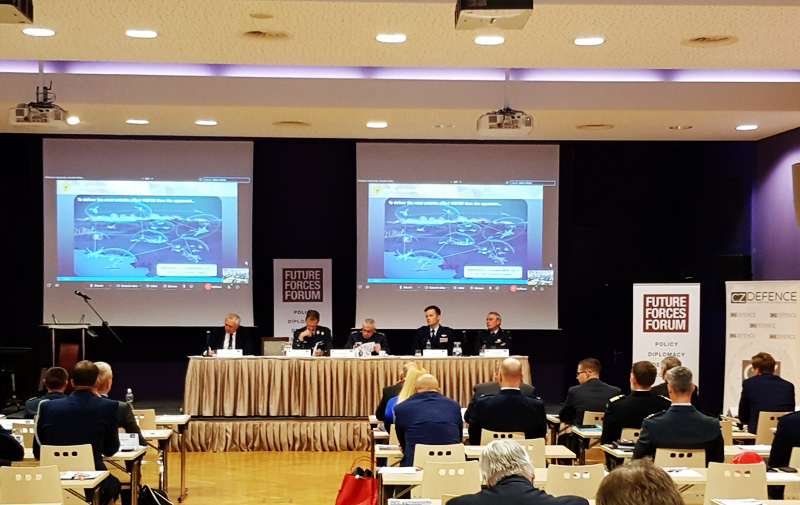 Picture: The conference "Future Air Force - New Generation Aircraft" held under the auspices of the Commander of the Air Force of the Czech Republic, Maj. Gen. Ing. Petr Mikulenka at the end of April, the discussion on the specific type of supersonic aircraft to be used by the tactical air force of the Czech Air Force after 2027 was fully launched. | Jan Zilvar / CZ DEFENCE
Picture: The conference "Future Air Force - New Generation Aircraft" held under the auspices of the Commander of the Air Force of the Czech Republic, Maj. Gen. Ing. Petr Mikulenka at the end of April, the discussion on the specific type of supersonic aircraft to be used by the tactical air force of the Czech Air Force after 2027 was fully launched. | Jan Zilvar / CZ DEFENCE
The lease of the JAS-39 Gripen aircraft will end in 2027 with an option to extend it for two years. The original planned purchase and the resulting lease of Gripens for the Czech Air Force did not go smoothly (as with similar large purchases). The original tender lasted 7 years (1997-2004) and it took another year for the first 6 aircraft to arrive at the base in Čáslav. It is also worth mentioning that the original purchase of 24 JAS-39 Gripen aircraft planned by the Government of Miloš Zeman in 2002 for 60.2 billion crowns eventually turned into a ten-year lease of 14 Gripen aircraft for about 20 billion crowns in 2004. This lease was then extended to 2027 after a series of negotiations in 2014, with an annual lease cost of CZK 1.7 billion.
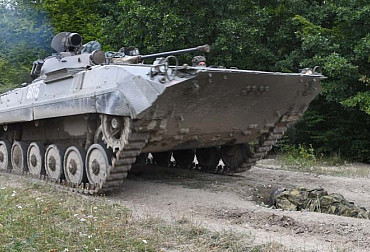
12 aircraft are not enough for the future
Currently, the Czech Army has fourteen JAS-39 Gripen aircraft, twelve of which are single-seat versions. Hungary, for example, has the same number and type of JAS-39C and two JAS-39D single-seat fighters. However, according to the commander of the 21st Tactical Air Force Base Čáslav, Colonel Jaroslav Mika, we would need more supersonic aircraft. "The fourteen machines were only a temporary solution when the planned twenty-four fighters were rejected after the floods in 2002. But from an operational point of view, we would need more aircraft," Colonel Míka told the daily Právo during a January visit to the 21st Tactical Air Force Base Čáslav by Defence Minister Jana Černochová.
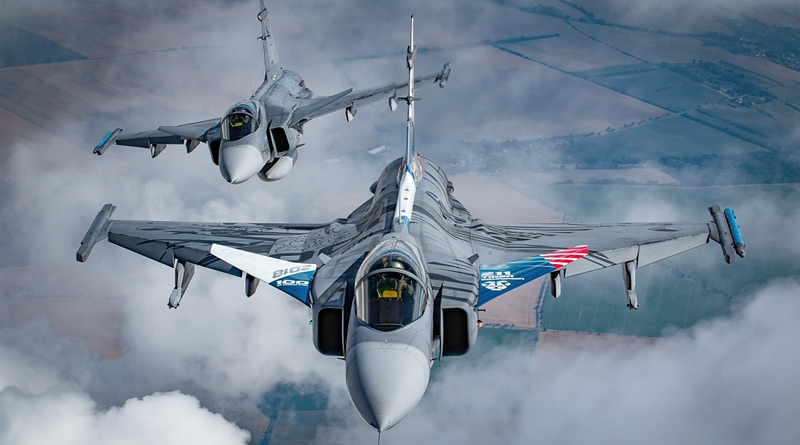
Picture: The Czech Army currently has fourteen JAS-39 Gripen aircraft, twelve of which are single-seat versions. (illustration photo) | Ministry of Defence of the Czech Republic
Defence Minister Jana Černochová will want the current Government to decide on the future supersonic air force. Černochová recently received a military recommendation from the army, which she will present to the government. The minister described the current number of 14 fighter aircraft as insufficient, as the use of supersonic aircraft is growing, both in the Czech Republic and abroad. "We should try to have 24 of these aircraft, that is what is in the strategic documents," Černochová said. The minister discussed the future of the Czech fighter aviation with her American counterpart Lloyd Austin during her recent visit to the United States.
Due to the approaching end of the Gripen lease, it is therefore high time to discuss the possible continuation of cooperation with Saab or the selection of a completely new solution now. In addition, the acquisition of non-Swedish supersonic aircraft must be accompanied by the development of appropriate facilities, infrastructure and pilot training. The new aircraft should then be operated by the Army until at least 2060, when gradual upgrades should take place.
The conference was attended by representatives of the Czech, Swedish, US and German armed forces, NATO Joint Air Power Competence Centre, the Swedish Gripen aircraft manufacturer (Saab) and the US F-35 manufacturer (Lockheed Martin). All of them presented their experience to date, the possibilities of involving the aircraft in joint operations and their overall potential. Judging by the current nature of conflicts and resolution situations, it appears that sensing capabilities with ground-based weapon systems, stealth aircraft protection systems and the rearmament process itself will be essential to the selection of new aircraft, in addition to price
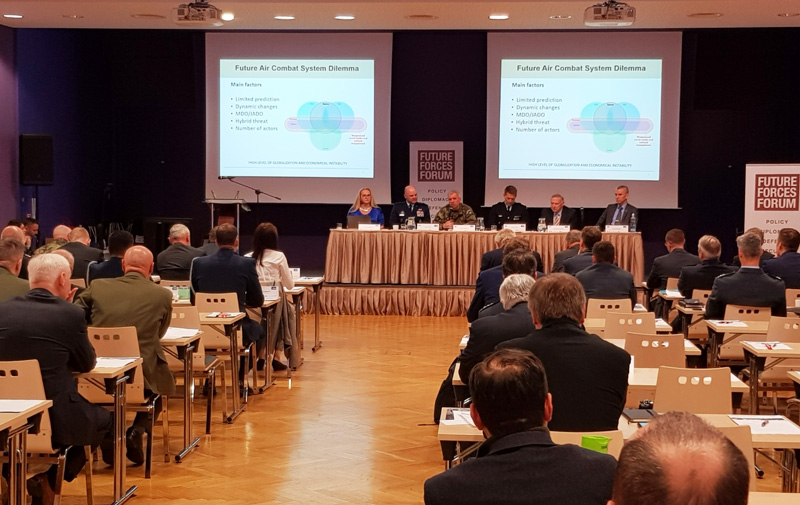 Picture: The conference was attended by representatives of the Czech Armed Forces, Sweden, the USA and Germany, NATO Joint Air Power Competence Centre, the Swedish manufacturer of Gripen aircraft (Saab) and the American manufacturer of the F-35 (Lockheed Martin). | Jan Zilvar / CZ DEFENCE
Picture: The conference was attended by representatives of the Czech Armed Forces, Sweden, the USA and Germany, NATO Joint Air Power Competence Centre, the Swedish manufacturer of Gripen aircraft (Saab) and the American manufacturer of the F-35 (Lockheed Martin). | Jan Zilvar / CZ DEFENCE
The current favourites are the new Gripen and F-35
Currently, one of the options seems to be the acquisition of a new version of the JAS-39 aircraft, i.e. the Generation 4+ version of the JAS-39E/F, which has a number of features of the 5th generation aircraft, which would increase the Czech supersonic air force's capabilities. Moreover, deliveries of these aircraft could easily follow the termination of the current JAS-39 C/D lease contract.
One of the biggest advantages of the new Gripen is the completely new architecture of its on-board electronic systems. These are designed in such a way that the software and hardware necessary for actual flight is completely separate from the systems used for combat, communications and the like. This concept, referred to as DIMA (Distributed Integrated Modular Avionics), brings a number of advantages both during development and throughout the life cycle.
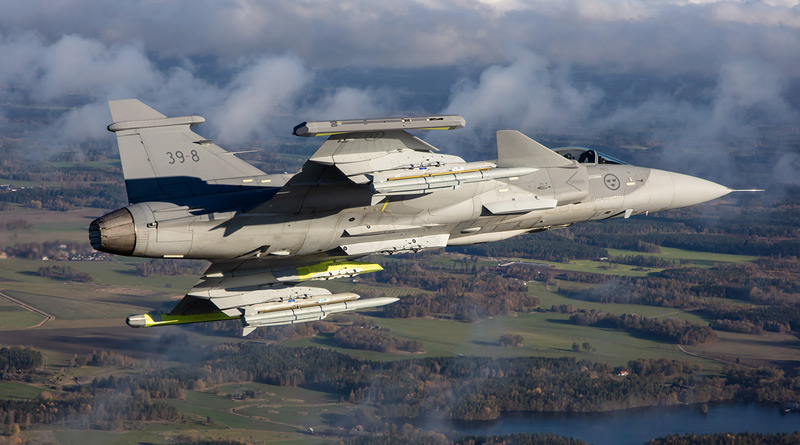 Picture: JAS-39E serial number 39-8 | Saab
Picture: JAS-39E serial number 39-8 | Saab
The Gripen E's increased performance is made possible primarily by the installation of a new power unit, the General Electric F414-GE-39E engine. The F414 engine is primarily the power unit for the US Navy's F/A-18E/F Super Hornet aircraft. The Gripen E's operational capabilities are significantly enhanced by new sensors, such as the SELEX Galileo ES-05 Raven radar with Active Electronically Scanned Array (AESA) or the passive electro-optical Infra Red Search and Track (IRST) system named Skyward-G. The Gripen E also has new hangers and armament, among others.
The second option mentioned is the acquisition of US F-35 aircraft. The F-35 aircraft represent the 5th generation aircraft with all its advantages. The aircraft offers advanced software and, above all, excellent situational awareness, which is a key advantage of the F-35.
Importantly, after overcoming some initial difficulties, the F-35 is proving to be a very reliable and proven type. Hundreds of these advanced aircraft are already flying around the world with various air forces and the number of interested parties is growing, which also speaks volumes about the quality of this type. It is also important that European countries such as Poland, Switzerland, Greece, Finland and now also Germany are acquiring them. And there are probably more countries to come, which as a result offers easier availability of spare parts, the possibility of coordination between operators, etc.
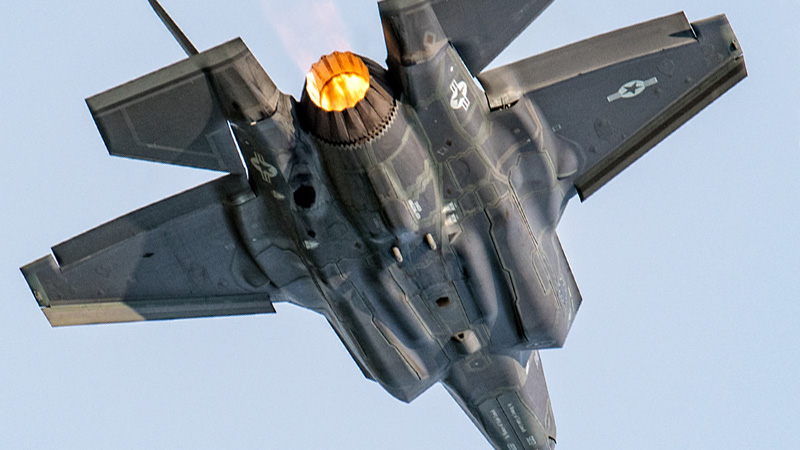 Picture: One of the options for the future of the Czech supersonic air force is the acquisition of American fifth-generation F-35 Lightning II aircraft | Shutterstock
Picture: One of the options for the future of the Czech supersonic air force is the acquisition of American fifth-generation F-35 Lightning II aircraft | Shutterstock
The great advantage of the F-35 is that its production is already fully established and is taking place in large batches, and the manufacturer is even considering increasing it. However, it should be taken into account that the eventual production of F-35 aircraft for the Czech Air Force would take some time, including pilot training. Moreover, it should be taken into account that Czech pilots would have to undergo more extensive training with the transition to a completely different type of aircraft. Moreover, by acquiring the F-35, we would strengthen our Euro-Atlantic link, which, in the context of today's war in Ukraine, seems to be of considerable value.
The F-35 has its drawbacks, including its higher cost. As the recent Finnish tender shows, the F-35 is probably not that much more expensive than the JAS-39 E/F Gripen, but it is still a considerable sum. Perhaps an even bigger disadvantage of acquiring the F-35 is the higher operating costs - especially compared to the smaller Gripen - which could make the operation of these new machines very complicated in the future.
Determining the current and future battlefield and the huge technological developments
In addition to the discussion on the approaching deadline for deciding which supersonic aircraft the Czech Republic will eventually acquire, other important topics such as the determination of the current and future battlefield or the huge technological developments were also discussed. A number of issues related to the integration of the future Czech air combat system into NATO multi-domain operations were also addressed. How many aircraft should eventually be procured will also be an essential piece of information. Last but not least, it is also about streamlining roles in support of joint operations or protection of NATO airspace within the Future Combat Air System. In any case, it was stated at the conference that air power will continue to play a significant role in future joint operations, the protection of national airspace will be permanent and changes in the Alliance's priorities will be doctrinal. It was also said that it is not only our air forces that will have to face increasingly sophisticated air defence in the future in multi-domain operations.
In connection with the supersonic tactical air force of the Czech Air Force, we asked Maj. Gen. Ivo Střecha, Director of the Force Development Section of the Ministry of Defence of the Czech Republic, who attended the morning part of the above mentioned conference:
General, have the needs of the Czech Armed Forces changed in any way during the period of operation of the Gripen?
Later on, this task was expanded to the protection of the airspace of NATO countries/operation in NATO operations. The latest extension was for the capability to operate against ground targets / support ground forces.
How complicated do you think the transition to another type of aircraft would be?
Considering that we are already using Western type aircraft, not very complicated from this point of view. The most important thing is to have linguistically equipped personnel and to make the required infrastructure adjustments.
Are there any new capabilities that the aircraft should meet in the new period?
In addition to the current requirements, the new requirements are mainly the ability to collect and transmit data and a reduced reflecting surface (stealth, etc.).
How many aircraft will be tendered and in what timeframe is the winner expected to be determined?
The release of this information is at the discretion of the Secretary of Defence.
The Future Air Force - New Generation Aircraft conference will have its continuation, with the second part of the conference taking place as part of the now traditional Future Forces Forum, an international event including an exhibition and forum focused on defence and security. The main programme this year will take place from 19 to 21 October at the PVA EXPO in Prague.















